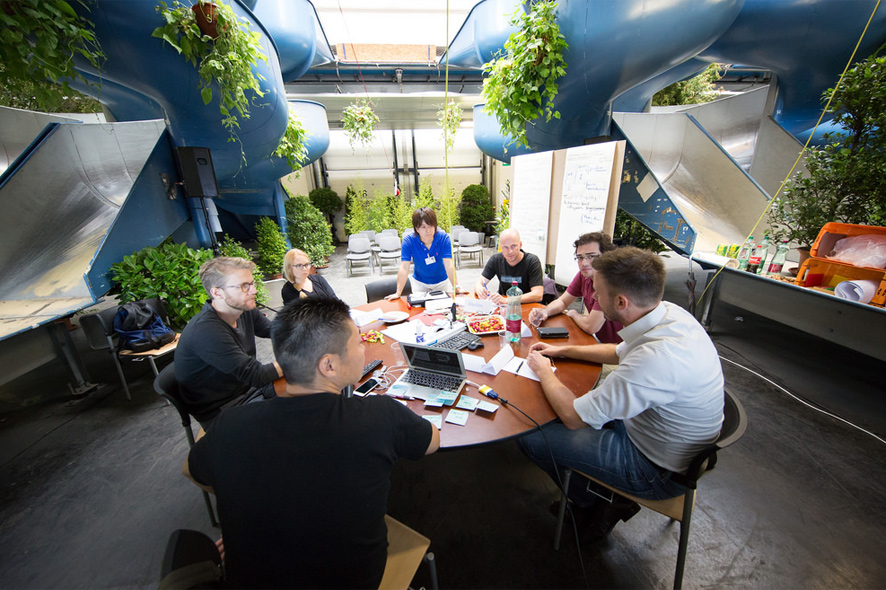As a result, the selected participants and mentors are of a very high standard and diversity. All of whom are listed alongside the complete program on the FIS2016 website (https://ars.electronica.art/radicalatoms/en/future-innovators-summit/). For those wanting a deeper insight into the background and vision behind FIS, the following text is an edited transcript from a recent interview/discussion between FIS Lead Research Kristefan Minski and Project Lead Hideaki Ogawa.
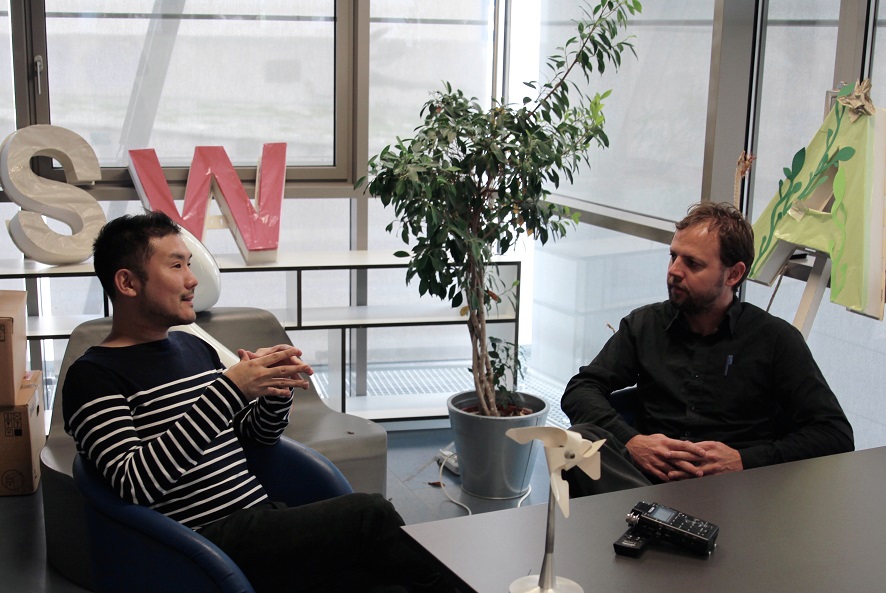
FIS Lead Research Kristefan Minski and Project Lead Hideaki Ogawa are discussing the content and the direction, FIS will take in 2016. Credit: Markus Scholl
Kristefan Minski (KM): For those who have not been introduced to the FIS yet, can you please point out what makes this format unique compared to other such innovation workshops and second, the special aim and purpose of this year’s edition?
HO: Nowadays, we can find many types of creative discussions such as ideathons and hackathons focused on finding new ideas and solutions, but FIS is completely different. We are not creating solutions we are creating questions. This years’ editions is the result of a 3 year project with the focus on extracting creative questions as the agendas for tomorrow. Working with forward-thinking innovators to develop creative questions – this is the basic idea.
KM: The FIS2016 introduces the 3 important themes of Future Humanity, Future Education and Future Commons. What was your motivation in picking those especially and could you please give some background information on the research?
HO: The reason why we decided to set the 3 themes is their connection to the core research questions from our Future Catalyst topic which is a collaboration between Ars Electronica and Hakuhodo. Hakuhodo is located in Japan and we are naturally researching about the change of Japanese society- now especially for the so called ‘2020’, the year Tokyo will be hosting the Olympics, or rather the post-Olympic time. For Ars Electronica, Tokyo is one of the most interesting subjects. Since last year, we researched and coined the idea ‘Post City’ which means the places where people will be living in the future. Tokyo as one of the biggest urban environments works formidably as a research background.

Under the topic “Future Humanity, the FIS is questioning the human condition in correlation to the technical development. The picture shows the robot Telenoid of Hiroshi Ishiguro, which mirrors the facial expressions of a tele-operator in real-time. Credit: Ogawa
People used to think of the city as a certain and stable environment, but it actually represents an ever-changing collection of ideas, knowledge, culture, politics, and history. We can use this prerequisite to tackle certain issues like the development of particular technologies, and raise questions on how humanity and robots can coexist in the future society. The reason why we set the Future Humanity theme is that we are facing a radical change and there are fundamental questions of how to deal with them.
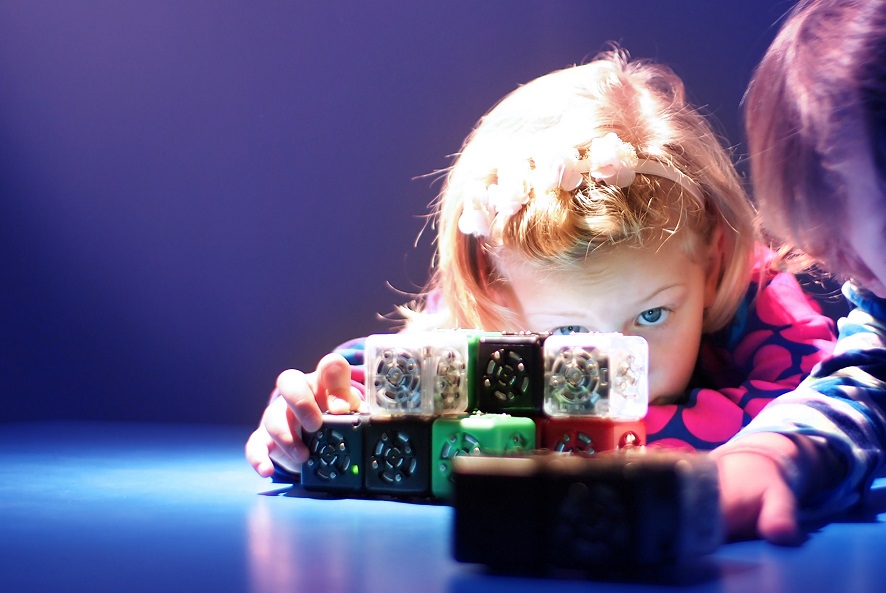
The school of life is on another curriculum, but the “Future Education” on the agenda of the FIS 2016. Credit: Martin Hieslmair
This topic is also a nice starting point to proceed with the theme of future education. In the 21st century and today everywhere, we are feeling the big importance and the challenges for a good education. The refugee issue and the nation’s problems in trying to conduct a national versus a EU-led governance is a very fine example for the need to focus on education matters. Then so, one of the most important things is human’s capability. We need to answer questions like: “How can people be educated?”, “What’s the common language?” “What’s the way to respect each other?” “What is the form of the even or new school of the 21st century?”
Then, the final point is about future commons and if you go to Tokyo you know what we mean because Tokyo’s shared spaces are unique and quite different from the ones in Europe. Here, we can find very simple structures for shared spaces, even though sometimes, and nowadays, it might not work well. In Tokyo, space is so little that it feels like being hidden or only existing in the personal world. You won’t find many common spaces. And here I am talking of course about Physical space. The theme of Future Commons is very important for the architecture of physical environments but also in terms of the digital revolution.
Opening those three themes to a global audience and global partners, we are expecting them to be very unique triggers to exchange each cultural difference and also each situation all over the world.

Tokyo is so densely populated, that you need to go on the outlook for public spaces. The topic of “Future Commons” is about the physical and the digital places we share. Credit: Asahi Shimbun
KM: Thanks Hide, great response and impressive overview. I might now just pick up on the point you raised about the city as social experiment, because in my own research and discussions with my supervisors, Richard Vella and Horst Hörtner, we talked about the city as an example of true transdisciplinarity. This idea that there is no real absolute method but all of these skills, knowledges and personalities work and blend together in a very organic way for the purpose of coexistence and progression. FIS is also about curating a new, unique and interesting space which is likewise blending people from different backgrounds, disciplines, cultures, etc. together in the overall meta-setting, and week-long experiment of the Ars Electronica Festival. So could you just talk a little bit about what is actually happening during the FIS 2016?
HO:
Well, actually in the FIS, we have very unique experiences every-day. So through the Ars Electronica Festival. The innovators as well as mentors are invited to these unique experiences.
The first day is the kick-off day which consists of kick-off breakfast, inspirational tour and the kick-off tea. In those events, each innovator will have around a 3 minute slot and they are telling us about their individual activities and also their ideas about the initial question examples from the 3 themes. During the inspirational tour, the 5 individual groups of innovators together with their facilitator are walking through the Postcity. The Postcity itself is an incredible source of innovative inspiration where the participants can find the hints of the discussions.
Of course some of the participants are exhibitors and artists themselves who provide an opportunity to also experience these activities. So in this way, the FIS is quite different. Normally we are collecting such innovators to be in 1 room and that’s it. But imagine if behind that room is a large open space where so many inspirational works are located and even done by some of the innovators themselves. As a backdrop, this atmosphere will be unlocking the creative energies for the innovators.
The second day is a more intensive day where the innovators will have all day workshops with facilitators (the guiding experts) to extract the creative questions. The workshops are happening in the greater open and natural environment of the festival where the audience is also free to watch and partially participate in each groups creative collisions. In this way, the general festival audience might just be exploring the Postcity and then come across these creative happenings. On Saturday, we are going to have the special mentor sessions which means that the innovators can get some advice and exchange their ideas with the high level experts. The mentors are experienced innovators, across many domains. In my opinion, it is not just for the innovators but also the mentors who can learn the ongoing and very interesting flash inspirations from the innovators. We setup these special mentor sessions, to really deepen the questions.

Shota Mori (JP) is presenting the iPhone Quick-Draw System at the first FIS during the Ars Electronica Festival in 2014. Credit: Tom Mesic
On Sunday, we’ll have the final presentations from each group to explain about their creative questions, meaning agendas for tomorrow. There should be at least 5 creative questions, meaning 5 agendas to be displayed clearly and open for everyone.
KM: It seems worth mentioning also that the approach of FIS resonates very well with the theory of John Maeda who advocates for the importance of art in the innovation process because it’s about asking questions and innovation is the ability to respond to those questions. Considering the FIS is now only 3 years old, it has been growing exponentially and now culminated into a very well-known festival happening. There was large amount and very high level of entries to the open call this year. Perhaps you could talk a little bit about who will be participants in the FIS this year.
HO:
Firstly, the best way to see everyone involved is to just visit the website: https://ars.electronica.art/radicalatoms/en/future-innovators-summit/
Here, as you said, one can see the diversity.
Group A and B is Future Humanity and you can find very interesting people such as Ai Hasegawa who is making new questions around her topic of “impossible baby”. For instance, today people are making the baby between male and female but what if the baby is coming from the same gender. It follows the development of the biotechnologies and challenges to look at the fundamental understanding of what humanity is now. Another example from these groups is Behnaz Farahi, from Iran, who is a designer and architect. She is creating a new fashion, new clothes, which are responding and reacting to the environment. She is looking at what we humans are wearing in the way of a social skin and what will be the development with the technology for the second skins.
Then if we look at the Group C, Future Education, we welcome Oscar Ekponimo from Nigeria, who is an entrepreneur working with social innovation in many ways. Actually we met first at 2014’s FIS. He had won the prestigious innovation award from the ITU competition. More than ever, we stress the importance of education for creativity and on fresh ways to adapt the new education. It means the future education needs are not about sustainability only, but rather to develop the skills for resilience which is far more important. This is the same as in many other domains such as fabrication, biological science, e-learning or robotics and so by combining these backgrounds, we see the potential to deepening the concept for future education.

Oscar Ekponimo from Nigeria is a member of group C, “Future Education”, here depicted at the Future Innovators Lunch in 2014. Credit: Florian Voggeneder
Group D and E is Future Commons, a very good mixture from engineers, creatives and activists working in the new setting of new making and talking about how the new commons for creativity is developed. Genta Kondo for instance, who received an honorary mention in the context of the Prix Ars Electronica with the “Hackberry”, a project for open source prosthesis. Another participant example in this group is Mahir Yavuz from Turkey with RGA currently in NY. He is an Ex-Futurelab member and his speciality is info graphics and visualisation of invisible information, whether it be politics, big data or AI. So in this way, we see the point of how to make the communication with the people as another important area for contribution. The cultural diversity in these groups is vast with members also from Germany, Korea, USA and China which means strong political differences. They will address topics such as what’s the way to make the future storytelling? Or what the future bitcoin will be? Or how the city is changing with these technological developments. So we are not sure which direction is coming for this theme but what we can imagine is this political, physical or this new digital commons and digital community will be discussed and will include the meaning of governance in the 21st century.
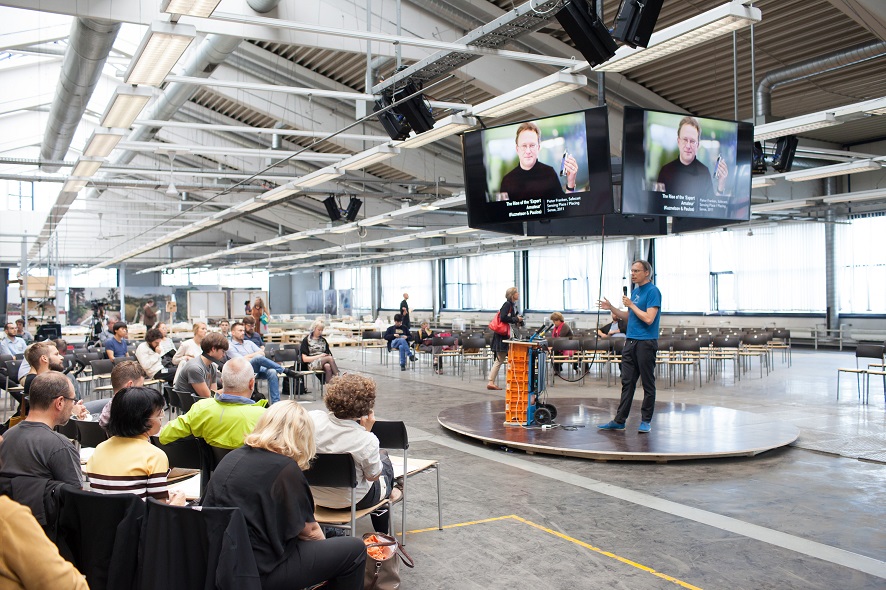
Dietmar Offenhuber (AT), assistant professor at the Northeastern University, Boston, is facing his audience at Connecting Cities Conference/Future Innovators Summit in the PostCity Conference Square 2015. Credit: Florian Voggeneder
KM: You mentioned the importance of this term resilience which has become a very central focal point of our project and the discussions and conversations we have been having with the various partners involved in FIS. Could you please talk a little bit about this and the role of art as Ars Electronica sees it, especially in terms of the resistance vs resilience approach?
HO: Actually now all over the world we are facing to certain threats and difficulties. Of course every time and every generation has different types of complexities. If we consider technology as a driving force and since Ars Electronica started to work for this intersection between Art, Technology and Society in 1979, we have been observing the technological development since the beginning. What we are watching now are quite uncertain social situations and nobody really knows how our lives will look in 5 years ahead. The rapid development of technologies always made for confusion and loss of perspective. It means that we need a place to discuss and also that we need to get back to the point of human centred thinking. Not technological thinking or optimistic/pessimistic thinking but really to have the opportunity to think about what is a human? This idea is very closely connected to Art. Art is very effective for visions and strategies by understanding our basic positions through the raising of creative questions. Now, and more generally, Ars Electronica is thinking that art is a very strong catalyst for resilience. So not just as a form of protest (resistance) but as resilience for the future. This future-orientated thinking is the core force why we researched about this FIS again because we have played the role as observatory but now as a kind of statement centre to ask these fundamental questions for resilience as humankind. So I hope this year’s festival and also FIS could be a very interesting prototype to think of the meaning of art as resilience and also it’s not for the past or now but for the future.
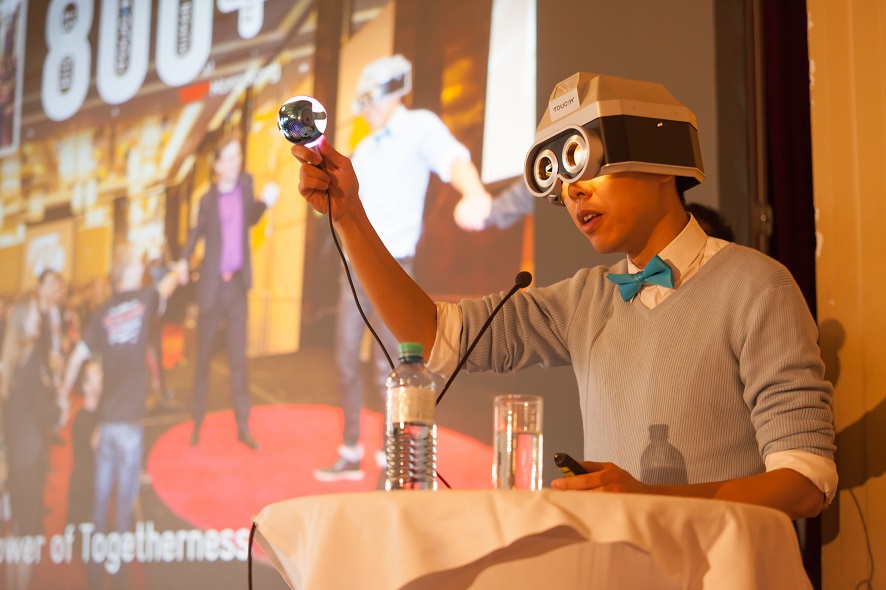
Eric Siu from Hong Kong received an MFA at Design Media Arts Department at UCLA, 2010. Credit: Florian Voggeneder
KM: And now just to wrap things up, many of the art and industry partnerships that Ars Electronica has formed over the years is also framed in much the same way when it comes to shaping a more resilient society in the future. So it would be good to discuss the FIS partnerships, how they developed and also the roles and how they support the program. Of course the Ars Electronica is principally involved with the artistic curation of the space but these partners also offer and contribute a lot and so perhaps you can just give a bit more insight on that point.
HO: The FIS is another project within the Ars Electronica x Hakuhodo Future Catalyst frame. Hakuhodo plays the important role of facilitator. Which means 5 people will be coming from Japan and will facilitate the creative collisions in the various groups. And then from Austria, we also have the local partner IPA Internet Foundation who also assist in scoping the talents and deepening the creative questions especially in the theme of Future Commons. So this means we have the 2 main partners in Hakuhodo and IPA and we make a team to construct this FIS platform together which includes the invitation of 13 high level Mentors from all over the world to support the discussions.
Merken
